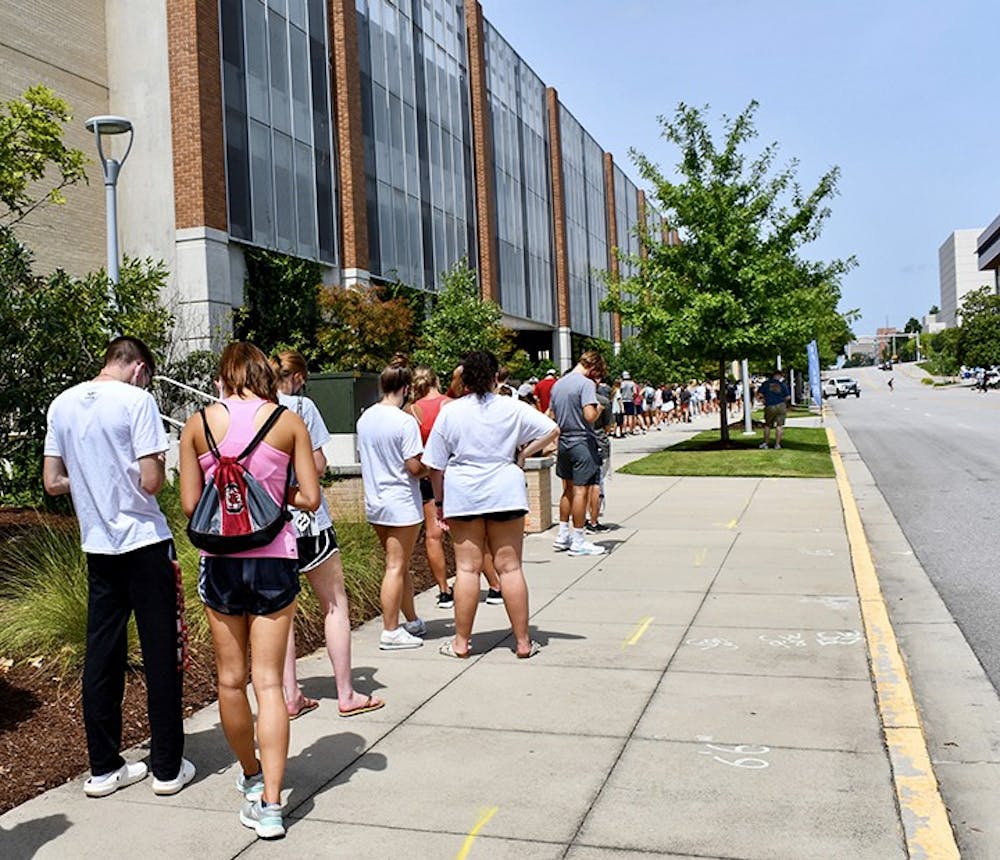After consecutively working 18-hour days, the Saliva Assay Free Expedition (SAFE) test staff has canceled saliva testing until Tuesday due to staffing shortages, university spokesperson Jeff Stensland said.
Phillip Buckhaults, the creator of USC's version of the saliva test, said his team is analyzing about 1,000 tests a day – with staff and equipment that can only comfortably complete 600 a day.
Once saliva samples are collected, the sample undergoes a heat activation step to "render the virus non-infectious,” Buckhaults said.
Then, the sample goes through 40 rounds of heating up and cooling down, which makes any amount of the virus present double in size each round. The more virus present in a sample, the easier it is for scientists to detect it.
Currently, it takes the machines two hours to process a batch of test samples. According to College of Pharmacy Dean Stephen Cutler, their "peak" for testing so far has been 1,200 tests in one day.
"We have four [machines] available to us, and we run those. We don't run them 24 hours a day; we run them probably about 12 to 14 hours a day. But, the number that we did over the past week and a half, I think our peak was right at 1,200 tests in one day. But, I think the sweet spot for us, right now, appears to be, on average, probably about 600 a day. That's what we're seeing," Cutler said.
In some cases last week, the machines were running until 11 p.m. To get a head start on this process, student testing hours have been moved to 10 a.m. until noon on Davis Field II every day of the week.
Once the last machine finishes, research assistant professor Carolyn Banister must individually inspect every sample. There are nights when she doesn’t finish analyzing the samples until 5 a.m., Buckhaults said.
She is the only employee at USC who has received the government certification that allows someone to determine if a COVID-19 test is positive or not. Buckhaults’ team is currently looking to hire more individuals who are also certified to read the COVID-19 tests.
Additionally, to help curve the equipment shortages, two new liquid-transferring robots and PCR machines, which heat and cool the samples, are on the way, Buckhaults said.
While the saliva test is newer than the nasal swab test, Buckhaults said he wants students to know that the two agree with each other 100% when symptomatic individuals get both tests.
“[The virus] shows up at the same time [in the saliva test] as it shows up in the nasal swab,” Buckhaults said. “The two things track together very well.”
Before students came to campus, USC did pilot studies in which they had groups of people testing positive for COVID-19. With proper isolation, they were able to drive the positive rate down to zero, Buckhaults said.
“The scientific consensus is that if you test once a week, and you isolate the positives, then ... you can drive the virus to extinction in a population over, say, three or four infection cycles,” Buckhaults said. “And that is our goal — to check everybody weekly, and get all these cases under control, so that then, the people that are infected go sit in the penalty box for 10 or 14 days ... and we eventually drive the virus to extinction on campus.”

